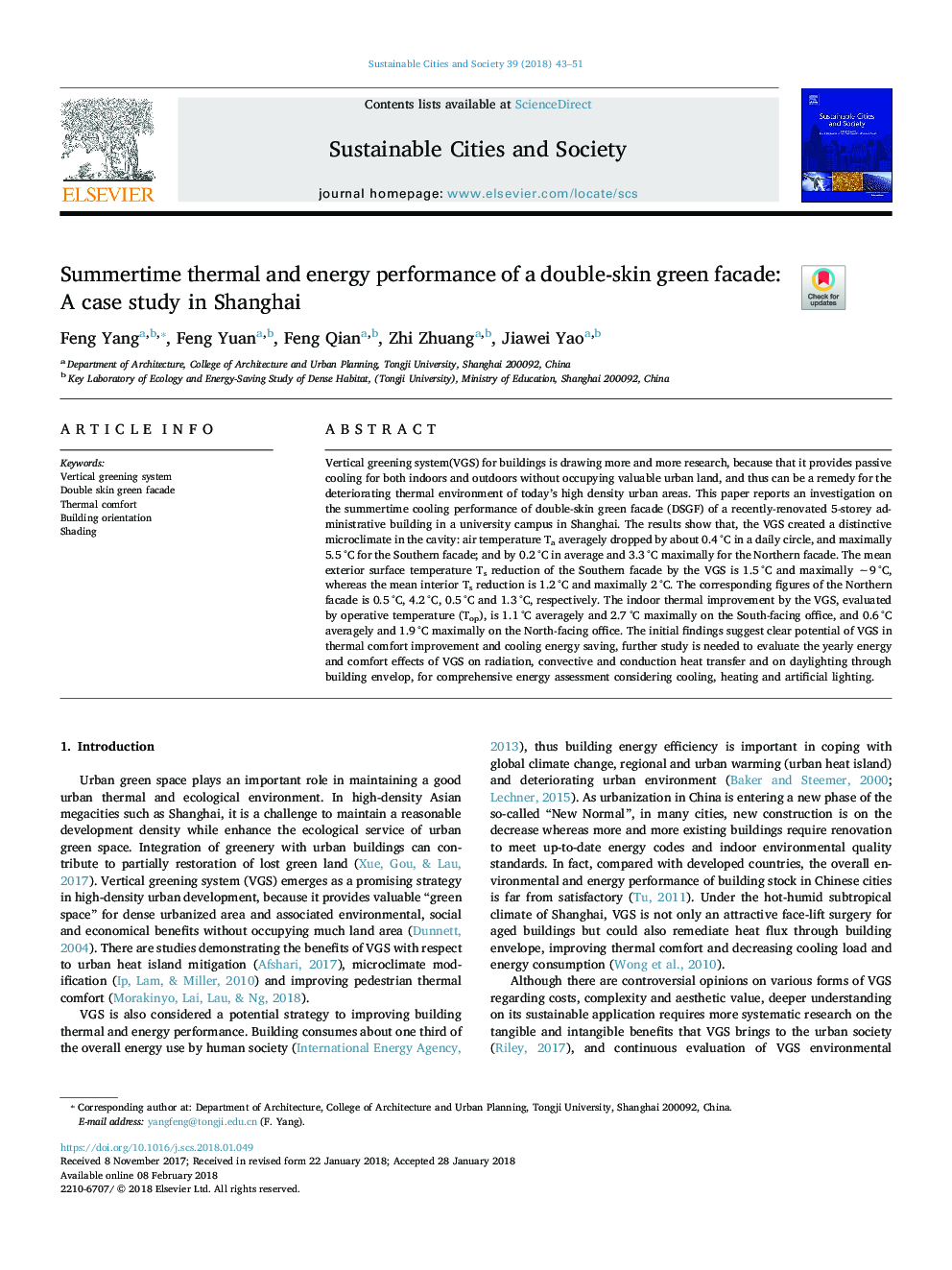| Article ID | Journal | Published Year | Pages | File Type |
|---|---|---|---|---|
| 6775055 | Sustainable Cities and Society | 2018 | 9 Pages |
Abstract
Vertical greening system(VGS) for buildings is drawing more and more research, because that it provides passive cooling for both indoors and outdoors without occupying valuable urban land, and thus can be a remedy for the deteriorating thermal environment of today's high density urban areas. This paper reports an investigation on the summertime cooling performance of double-skin green facade (DSGF) of a recently-renovated 5-storey administrative building in a university campus in Shanghai. The results show that, the VGS created a distinctive microclimate in the cavity: air temperature Ta averagely dropped by about 0.4â¯Â°C in a daily circle, and maximally 5.5â¯Â°C for the Southern facade; and by 0.2â¯Â°C in average and 3.3â¯Â°C maximally for the Northern facade. The mean exterior surface temperature Ts reduction of the Southern facade by the VGS is 1.5â¯Â°C and maximally â¼9â¯Â°C, whereas the mean interior Ts reduction is 1.2â¯Â°C and maximally 2â¯Â°C. The corresponding figures of the Northern facade is 0.5â¯Â°C, 4.2â¯Â°C, 0.5â¯Â°C and 1.3â¯Â°C, respectively. The indoor thermal improvement by the VGS, evaluated by operative temperature (Top), is 1.1â¯Â°C averagely and 2.7â¯Â°C maximally on the South-facing office, and 0.6â¯Â°C averagely and 1.9â¯Â°C maximally on the North-facing office. The initial findings suggest clear potential of VGS in thermal comfort improvement and cooling energy saving, further study is needed to evaluate the yearly energy and comfort effects of VGS on radiation, convective and conduction heat transfer and on daylighting through building envelop, for comprehensive energy assessment considering cooling, heating and artificial lighting.
Related Topics
Physical Sciences and Engineering
Energy
Renewable Energy, Sustainability and the Environment
Authors
Feng Yang, Feng Yuan, Feng Qian, Zhi Zhuang, Jiawei Yao,
